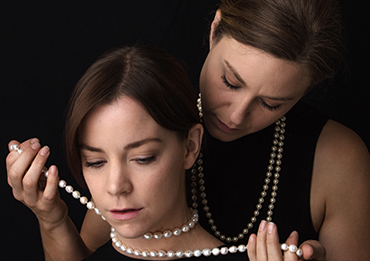Jean Genet based The Maids on a real murder case from 1933

By A Noise Within
September 9, 2016
Christine and Léa Papin were real-life sisters who came from an abusive, dysfunctional, poor family. As adults, the two were extremely close and may have had an incestuous relationship. They worked as maids for the Lancelin family for many years, but one night in February 1933, they brutally murdered their employer, Madame Lancelin, and her daughter, Genvieve, in their home.
The bodies had been maimed and their eyeballs gouged out. When the police arrived at the scene of the crime, they found Christine and Léa huddled together in their bed upstairs. The sisters confessed to the murders and the murder weapons were found, but gave no motive. It was eventually revealed that one possible motive for the murders was a dispute the maids and Madame Lancelin had had about an electrical fuse that had blown, which was to be subtracted from the maids’ wages. In the public opinion, their act came to be seen as a rebellion of the oppressed working class against their bourgeois oppressors.
At the time, psychoanalyst Jacques Lacan wrote that the sisters “mingled the mirage of their illness with the image of their mistresses,” and so they murdered their mistresses because they saw in them their mirror images. Theatre critic Lyn Gardner, writing for The Guardian, explains that this is the idea taken up in The Maids, “in which fantasy and reality fold into each other. The story is re-imagined in a ritualized, hyper-theatrical dance of death… in which the two maids renamed Claire and Solange – play a deadly game where personalities and identities are fluid and exchangeable, as the pair plot to dispatch their spoilt mistress with poisoned tea.” (Gardner, 2016)








